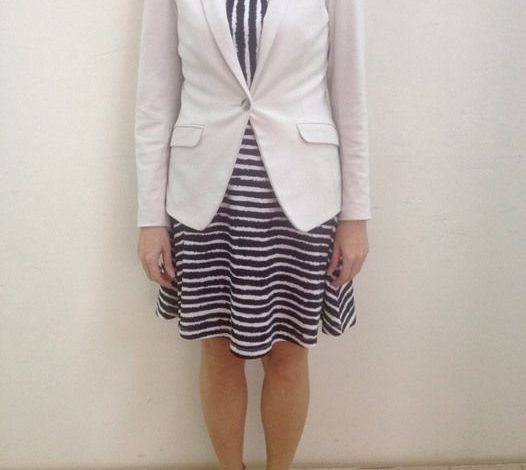Challenge the Dress Code, in Court


By Mariam Mokhtar
In May, the Ipoh Echo article ‘Dress Code Confusing’ sparked debate among Ipoh netizens, when they read about the manner in which a smartly dressed woman was prevented from visiting the Ipoh City Council building.
If Susan, the corporate affairs executive had been underdressed, or dressed shabbily, wearing torn, filthy clothes and in flip-flops, then that would have been an entirely different matter. Susan was instead, respectably attired in a knee-length black-horizontal striped skirt and vertical striped top. Her long sleeved light-grey jacket did not expose her bare arms nor did she have a plunging neckline. Her shoes were smart and her toes were covered.
Whilst all of Ipoh fumed and said that Susan did not deserve that treatment, other people began to relate their experiences at other government offices around Ipoh.
Over several weeks, other newspapers covered the story, and it transpired that the dress-code enforcement, was not just an Ipoh problem, but a nationwide menace. Since the day Susan received her rude ‘awakening’, several more incidents of Malaysians, mostly women, being told off by the security guards, who man the counters of these government departments, have been reported.
On May 7, a man who had forgotten to collect his luggage after his flight, returned to KL International Airport (KLIA), to retrieve his luggage from KLIA’s Lost and Found section.
Businessman Wilson Ng was refused entry because he was wearing pink knee-length shorts and sandals. He donned a pair of trousers and shoes, which the guard told him he would have to wear, to collect his suitcase.
The next dress-code incident was on May 27, at the National Archives in Kuala Lumpur, when a woman was asked to cover her clothes with a sarong and her head with a shawl, before being allowed into the building. She returned with some friends on June 10, and the whole group had to put on sarongs.
On June 8, a woman wrote, on Facebook, that when she visited the Road Transport Department in Kuala Lumpur, she was asked to put on a sarong. She was wearing a knee length skirt.
On June 10, a woman’s knees were also requested to be covered up with a sarong. The incident took place at the Selayang Municipal Council Office.
At the Sungai Buloh Hospital, a woman was forced to cover her legs with a towel, before she could enter the building. This occurred on June 16.
Then, on June 22, two reporters were asked to wear sarongs to hide their legs, just before they were due to cover a press conference at the Selangor State Secretariat in Shah Alam.
On June 24, the guard at the Small Estate Unit of the Federal Territories of Land and Mines Office stopped a woman from entering the building.
The next day, another woman was alleged to have been prevented from entering the Balik Pulau Court Complex because her knees were bare.
Is Malaysia undergoing the implementation of dress code policy in all its government offices and hospitals? Is the dress-code primarily addressed towards women? Are non-Malays the only target?
What if Malay women do not wish to wear the tudung and baju kurung, but are clothed in their best kebaya, their hair exposed? What if the Malay women dressed in skirts? Would they be barred entry?
Would women be turned away if they were to wear maxi length skirts or smart trouser suits? What if women and men wore their traditional costumes?
Will the guards turn them away, because they are ignorant, and do not know how to apply any flexibility? The problem with making security guards enforce the dress code is that many stick to the letter of the poster description and fail to exercise discretion.
What is the underlying reason for this strict, restrictive dress code? Is it something which the guards use to abuse their power, and lord it over the unsuspecting public? Or have they been given orders from the top? Is the management hiding behind the guards to escape blame?
With all the corruption scandals erupting around us, one wishes that the authorities would put as much effort into tackling corruption, as enforcing the dress-code.
Perhaps, it is time that a brave person challenged the dress code ruling, in court, because few people actually visit a government department dressed inappropriately. The focus of the civil servants should be on their work and giving good service to the public, instead of worrying about women’s knees.


